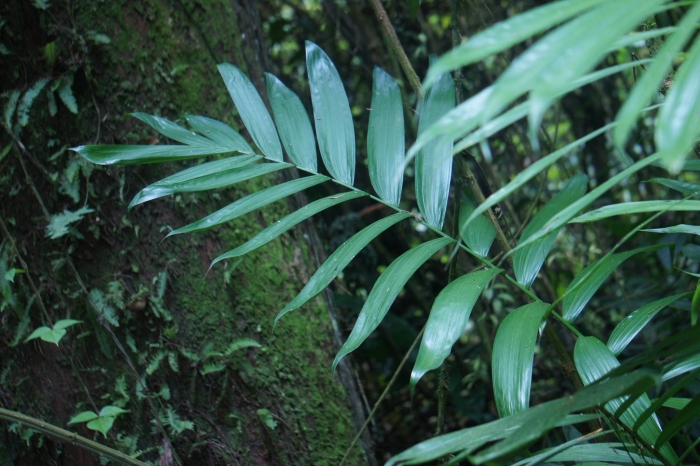Pacaya Palm
(Chamaedorea tepejilote)
Pacaya Palm (Chamaedorea tepejilote)
/
/

© Juan Carlos Pérez Magaña
CC BY-SA 4.0
Image By:
© Juan Carlos Pérez Magaña
Recorded By:
Copyright:
CC BY-SA 4.0
Copyright Notice:
Photo by: © Juan Carlos Pérez Magaña | License Type: CC BY-SA 4.0 | License URL: http://creativecommons.org/licenses/by-sa/4.0/ | Uploader: charro | Publisher: iNaturalist |

























Estimated Native Range
Summary
Chamaedorea tepejilote, commonly known as the Pacaya Palm, is a perennial herbaceous plant native to the understory of tropical rainforests and cloud forests in southern Mexico, Central America, and northern Colombia. It thrives in the moist, shaded conditions of its natural habitat, often found along stream banks and in ravines where humidity is high. The Pacaya Palm can reach up to 10 feet in height and features pinnate leaves that can extend several feet in length, giving it a graceful appearance.
The immature male inflorescences of the Pacaya Palm are a culinary specialty in Guatemala and El Salvador, where they are compared to an ear of corn and are consumed in traditional dishes like fiambre or prepared as envueltos de pacaya, either eaten in salads or fried. Beyond its culinary uses, the Pacaya Palm is valued for its ornamental qualities in tropical and subtropical gardens. It is a popular choice for indoor planting due to its tolerance of low light conditions and its ability to adapt to container growth. When cultivating Chamaedorea tepejilote, it is important to mimic its natural environment by providing well-draining soil, consistent moisture without waterlogging, and protection from direct sunlight. While generally pest-resistant, it can be susceptible to spider mites and mealybugs in dry indoor conditions.CC BY-SA 4.0
The immature male inflorescences of the Pacaya Palm are a culinary specialty in Guatemala and El Salvador, where they are compared to an ear of corn and are consumed in traditional dishes like fiambre or prepared as envueltos de pacaya, either eaten in salads or fried. Beyond its culinary uses, the Pacaya Palm is valued for its ornamental qualities in tropical and subtropical gardens. It is a popular choice for indoor planting due to its tolerance of low light conditions and its ability to adapt to container growth. When cultivating Chamaedorea tepejilote, it is important to mimic its natural environment by providing well-draining soil, consistent moisture without waterlogging, and protection from direct sunlight. While generally pest-resistant, it can be susceptible to spider mites and mealybugs in dry indoor conditions.CC BY-SA 4.0
Plant Description
- Plant Type: Tree, Shrub
- Height: 10-20 feet
- Width: 2-3 feet
- Growth Rate: Moderate
- Flower Color: Yellow
- Flowering Season: Spring
- Leaf Retention: Evergreen
Growth Requirements
- Sun: Part Shade, Full Shade
- Water: Medium
- Drainage: Medium, Fast
Common Uses
Border Plant, Low Maintenance, Potted Plant
Natural Habitat
Native to the understory of tropical rainforests and cloud forests, often along stream banks and in ravines
Other Names
Common Names: Shrimp Palm, Tepejilote Palm
Scientific Names: , Chamaedorea tepejilote, Chamaedorea anomospadix, Chamaedorea casperiana, Chamaedorea columbica, Chamaedorea exorrhiza, Chamaedorea exorrhiza, Chamaedorea exorrhiza, Chamaedorea sphaerocarpa, Chamaedorea wendlandiana
GBIF Accepted Name: